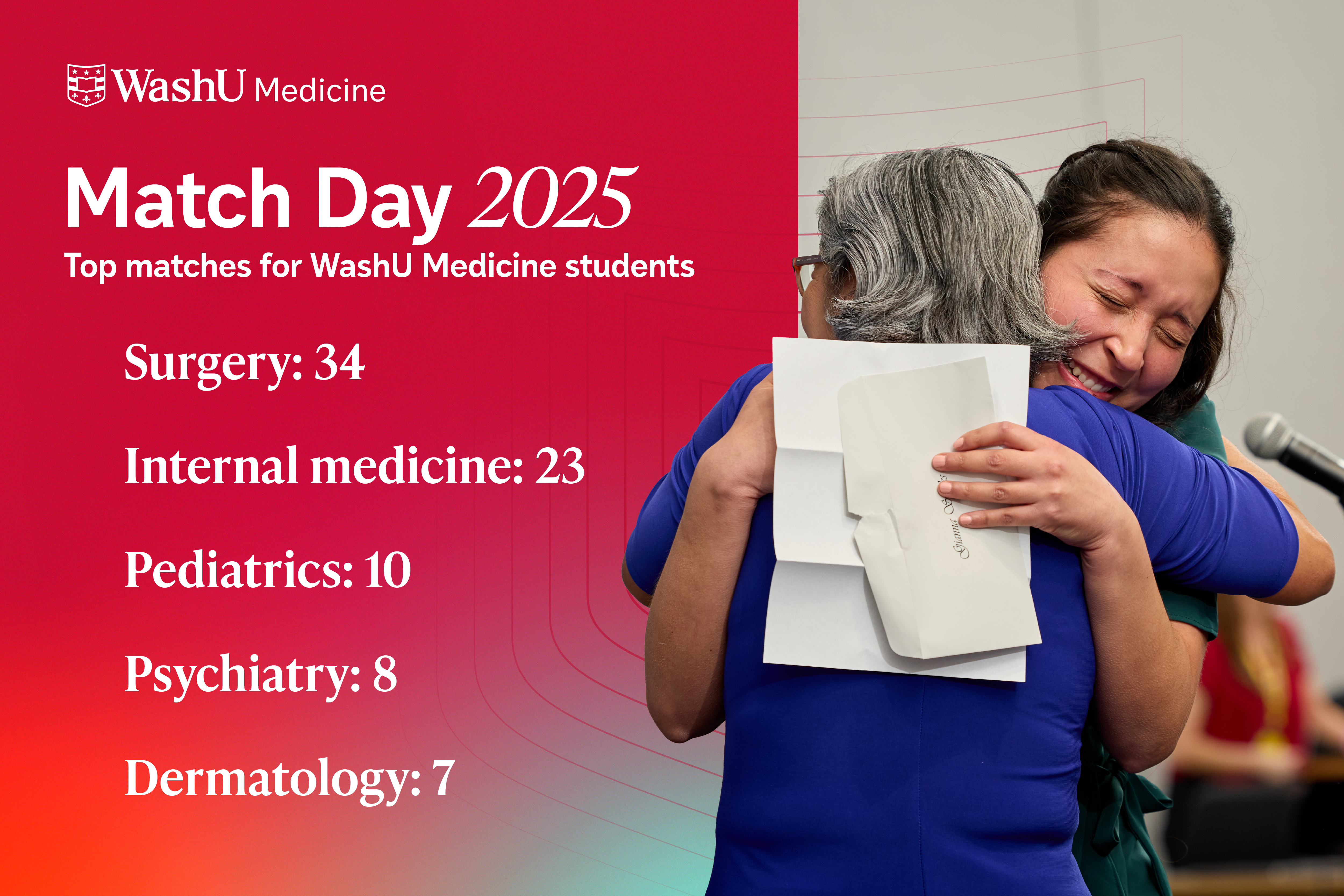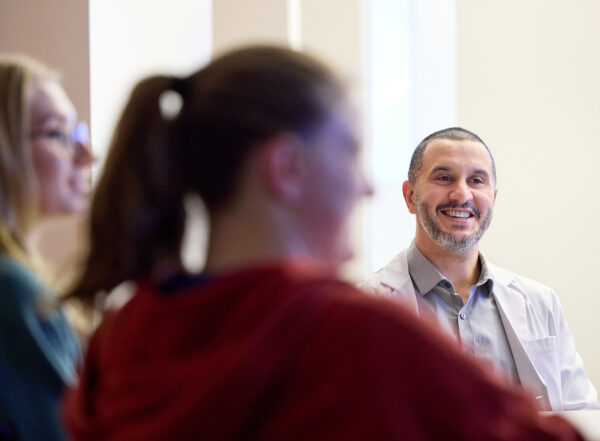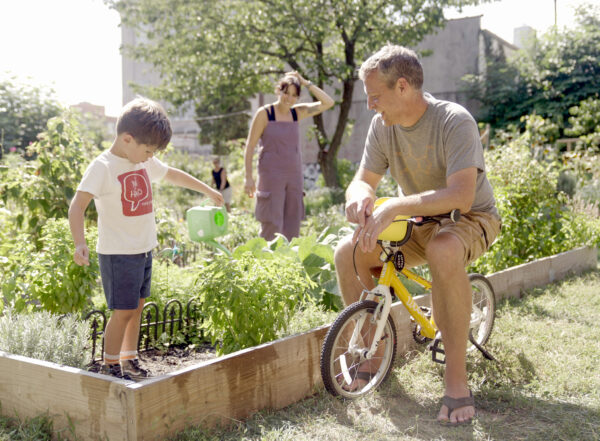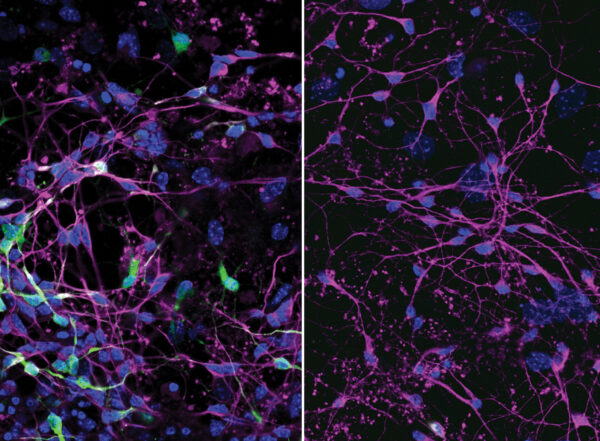On Match Day 2025, medical students celebrate their futures
At milestone event, graduating class learns where they will go for residency training
Video by Huy MachMedical students gathered with friends and family to celebrate Match Day, a celebration where the soon-to-be clinicians learned where they would pursue their medical residencies. The event was held on March 21 in the Eric P. Newman Education Center on the campus of Washington University School of Medicine in St. Louis. See below for a gallery of photos from the event.
The Medical Campus buzzed with anticipation March 21 as soon-to-graduate medical students at Washington University School of Medicine in St. Louis gathered to learn where they will train as residents. Hugging their classmates and snapping selfies, students were joined by friends and family members for the annual Match Day tradition, a major milestone in the journey to becoming practicing physicians.
“Every Match Day is so exciting – for the students and for me,” said Kathryn M. Diemer, MD, assistant dean for career advising and a professor of medicine at WashU Medicine. For 25 years, Diemer has played a critical role as an advisor, advocate and mentor in guiding WashU Medicine students as they apply to residency programs, a process that has become increasingly competitive over the years.
“By every measure, this class is exceptional — the students applied to WashU Medicine during the height of the COVID-19 pandemic, and managed to remain resilient and flexible even as the pandemic wore on,” Diemer continued. “Despite the challenges, they excelled in caring for patients and for each other. The future of medicine is in good hands, and I am confident that they will make meaningful contributions to their patients, their communities and the field of medicine as a whole.”
The key part of the ceremony kicked off at exactly 11 a.m., when the National Resident Matching Program results were formally released across the country. This year’s WashU Medicine Match Day cohort had a match rate of 95% (the national rate was 93.5%). Many will begin their training July 1 at the nation’s top-ranked medical centers, in terms of chosen specialties as well as overall reputation.
Students had the option of opening their results in private or as a “blind reveal” in front of classmates, faculty and loved ones in a packed auditorium in the Eric P. Newman Education Center.
The students who preferred to learn their match in private gathered with their well-wishers in a room just outside the auditorium. Together, the crowd counted down with a large digital timer with the final “Zero!” punctuated by the sound of dozens of envelopes being ripped open. Whoops of joy and celebratory fist pumps shot up as students shared their results.
Once inside the auditorium, students were called individually — or sometimes in pairs for couples who hoped to match together — to announce their match and take a moment to thank their supporters. Students stepped up to the microphone accompanied by walk-up songs of their own selection, with one student who matched in orthopedic surgery cleverly choosing George Thorogood’s “Bad to the Bone,” while another had to quell a spontaneous audience singalong — complete with dance moves — to her choice of Chappell Roan’s “Hot to Go.”
Kendall Burks learned she will be going to Boston for an internal medicine and research pathway residency at Brigham and Women’s Hospital, affiliated with Harvard University.
“It’s absolutely surreal,” said Burks of Match Day. “When I look at the envelope and what it means to me, I am so thankful for the people at WashU Medicine who helped me along the way, because I feel that they’re the ones who really pushed me to do my very best.”
This year’s Match Day students at WashU Medicine represent the second class to complete the Gateway Curriculum, the school’s updated training program instituted in 2020. The curriculum emphasizes early clinical immersion and a holistic view of patients and the medical profession.
“This second cohort of Gateway students have, in their time here, brought so much of their passions and experiences to their education in a way that will inspire their peers and future colleagues,” said Eva Aagaard, MD, vice chancellor for medical education, senior associate dean for education, and the Carol B. and Jerome T. Loeb Professor of Medical Education. “I am proud of their commitment to giving back to their patients, the profession, and the greater community and look forward to seeing the vital role they’ll play as clinicians, scientists, educators, innovators, and leaders.”
For students earning both MD and PhD degrees as part of the Medical Scientist Training Program (MSTP), their time at WashU represents a significant portion of their lives.
“I’ve spent nine years with my classmates in the MSTP program, and even though I’m really excited for the future, it’s a bit bittersweet in that we’re all going to different places,” said Marlene Kanmogne, who will receive her PhD in neuroscience and is staying at WashU Medicine for a residency in psychiatry at Barnes-Jewish Hospital. Kanmogne says that her PhD research in neuroimmunology gives her a solid grounding for her residency in psychiatry. “There are a lot of pre-natal, social and environmental factors that can have an impact on brain function that clinicians need to understand, and I think that the depth of training that I’ve been able to pursue at WashU Medicine will help me better serve my patients.”
Joshua Perez-Cruet learned he will go to Stanford Health Care in California to pursue a residency in emergency medicine. He had studied environmental science as an undergraduate before a desire to help people more directly led him to pursue a career in medicine.
At WashU Medicine, he worked with faculty to develop and integrate an eight-module climate-health thread into the curriculum. Topics include health impacts of climate change, disproportionate impacts on minoritized communities, environmental impacts of healthcare, and opportunities to mitigate these impacts.
“In the emergency room, you frequently encounter community-facing medical issues, such as mental illness, substance use disorders, and housing instability,” he said. “Climate change further exacerbates these issues, and I hope to help community members adapt to changing climates and champion emissions-reduction strategies at the hospital, community and national levels.”
Shannon Chiu has a similar wide-angle view on the class of 2025’s place in today’s world. She matched to Cincinnati Children’s Hospital Medical Center and intends to practice as a triple-boarded physician in pediatrics, psychiatry and child psychiatry. She likens the COVID-19 pandemic to a call to action for her generation, in the same way the HIV/AIDS epidemic was for a previous generation of doctors. Her time at WashU Medicine, which began during the height of the pandemic, has left her confident for the future, and not just in her own training.
“I think my generation feels that we have a responsibility to do better to earn our patients’ trust, and to acknowledge the challenges faced by many people in communities that lack access to health care. The curriculum and the training we’ve received here at WashU Medicine has really helped us understand these complex issues,” she said. “It gives me a lot of hope for the future, knowing that my amazing classmates are going into their respective specialties – from surgery to internal medicine to pediatrics and beyond – and that we will be well-positioned to understand both the medical and social needs of our patients.”
Many of the university’s multitalented medical students will continue the next step of their training in St. Louis with Wash U Medicine, either at the nationally ranked Barnes-Jewish or the St. Louis Children’s hospitals. Additionally, students also matched at other prestigious programs across the country, including Massachusetts General Hospital and other hospitals affiliated with Harvard University; University of California, San Francisco, Medical Center; New York-Presbyterian Hospital, affiliated with both Columbia University and Cornell University; Icahn School of Medicine Mount Sinai Hospital in New York; Johns Hopkins Hospital in Baltimore; Hospital of the University of Pennsylvania in Philadelphia; Yale-New Haven Hospital in Connecticut; hospitals affiliated with Stanford University in Palo Alto, Calif.; hospitals affiliated with University of Washington in Seattle; McGaw Medical Center of Northwestern University in Chicago-affiliated hospitals; and several others. Among the Match Day highlights:
-
- Of the 112 matched students, 24 will begin their training at Barnes-Jewish Hospital and one at St. Louis Children’s Hospital.
- Besides Missouri, the states where the greatest number of WashU Medicine students will train include California, Massachusetts, New York, Pennsylvania, Washington, Connecticut and Illinois. Altogether, this year’s class will be represented at 51 hospitals across 24 states.
- With 34 placements, the surgical fields were the most popular. Of those, ophthalmology led with eight, followed by orthopedic surgery with seven, general surgery with 10 (including both categorical and preliminary year matches), urology with four, neurological surgery with three and plastic surgery and otolaryngology with one each.
- The next most popular specialty was internal medicine, with 23 students, seven of whom matched into internal medicine-physician scientist tracks and four of whom matched into internal medicine-primary care tracks.
- Pediatrics, with 10 matches; psychiatry with eight; and dermatology with seven matches were the next most popular residencies.
- Overall, the National Resident Matching Program recorded 47,208 applicants registered and 43,237 positions offered. The National Resident Matching Program pairs the preferences of graduating medical students with those of residency program directors using ranked lists provided by each party and generating matches using a computerized mathematical algorithm.
Photos by Matt Miller. Click to enlarge.







